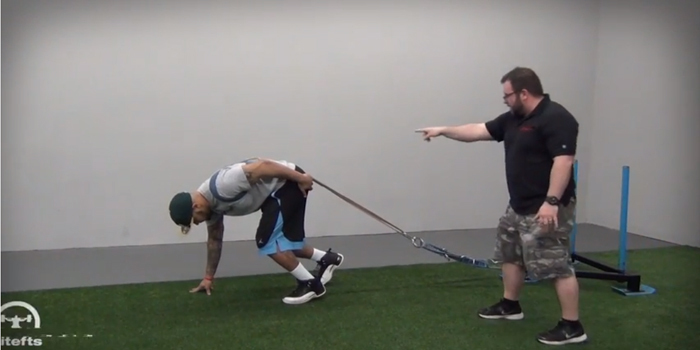
Elitefts™ Director of Education Mark Watts illustrates the set-up and explains the advantages of resisted sled sprints using the prowler. Demonstrating the sprint is Roosevelt Nix who has signed an NFL contract with the Pittsburgh Steelers.
This purpose of the video is not to convince you to incorporate resisted sprinting in your program. The purpose is to provide you with a brief overview of an alternate way to use elitefts™ bands as a more practical harness in a large group setting when using a prowler or sled.
How much weight should I my athletes use?
A general guideline is approximately 10-20% of the athlete's body weight. Generally speaking, the weight used should be heavy enough to elicit a training effect without inhibiting the sprinting mechanics of the athlete.
How far should my athletes be sprinting using resistance?
Again, a general guideline is between a 10 and 20 yard sprint. Longer distances can accumulate fatigue much faster with the additional weight added. In addition the purpose of resistance sprints is to enhance the start of the sprint by adding additional load in a horizontal plane. the longer the athlete sprint in a give distance:
- the posture becomes more upright
- the ground contact time is less with longer strides
- the foot strikes the ground differently (pawing as apposed to pushing)
- different muscle groups are recruiting due to the biomechanical change
An additional technique to incorporate to significantly enhance the training effect of resisted sprinting is contrast training. Simply put, this would require the athlete to perform an non-resisted sprint immediately following the resisted sprint.
Final Thoughts
- Make sure there is enough distance between the athlete and the Prowler® or sled so the front end does not lift up.
- Make sure there is tension on the straps before the athlete starts their sprints








